The Kasuga Taisha Shrine in Nara is the headquarters for over 3000 Kasuga Taisha Shrines around the country. The spacious shrine grounds are at the base of Mt. Mikasa. The distance from the first gate, the "Ichinotorii", to the Main Sanctuary is about 1,300 meters. Within the shrine grounds, there is a "National Treasure Hall" called the Kokuho-den, which houses and displays the valuable treasures kept at Kasuga Taisha Shrine.
About Kasuga Taisha Shrine
The shrine was founded in the beginning of the Nara Period, when the guardian deity of Heijo Castle in Nara - Takemikazuchi No Mikoto, also chief deity at Kashima Shrine in Ibaraki Prefecture, was enshrined at the summit of Mt. Mikasa. The shrine continued to prosper even after the capital was moved to Kyoto, and both the imperial family and the common people were strong believers, so the shrine has grown to have over 3,000 branches around Japan.
The variously shaped bronze and stone lanterns around the grounds were donated by nobles, samurai and common people. There are many vermillion shrine buildings, including the Kairo wall and the buildings contained within its interior, so you can admire what it was like in the early days of the dynasty. In addition, during yearly events such as Setsubun in February, and Obon on August 14th-15th, all of the lanterns are lit.
The Man'yo Botanical Garden at Kasuga Taisha Shrine
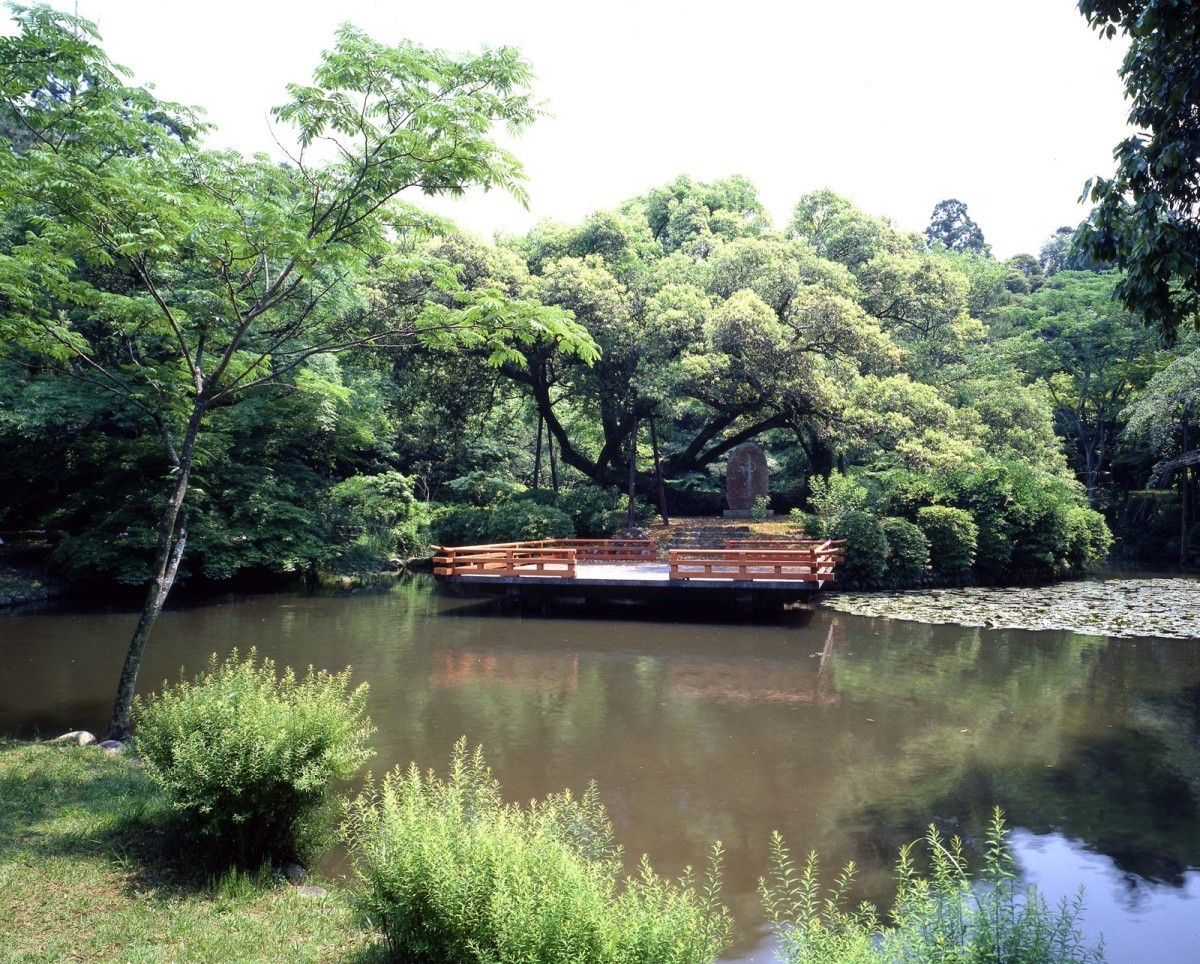
The Man'yo Botanical Garden within the grounds at Kasuga Taisha Shrine holds over 300 varieties of plant life, including Kasuga Taisha Shrine's symbolic wisteria, plum trees, cherry trees, lotuses, and many others. Around the end of April or early May, over 200 wisteria plants of over 20 varieties begin blooming, and it is one of the most famous places to see wisteria in Japan.
Highlights of Kasuga Taisha Shrine
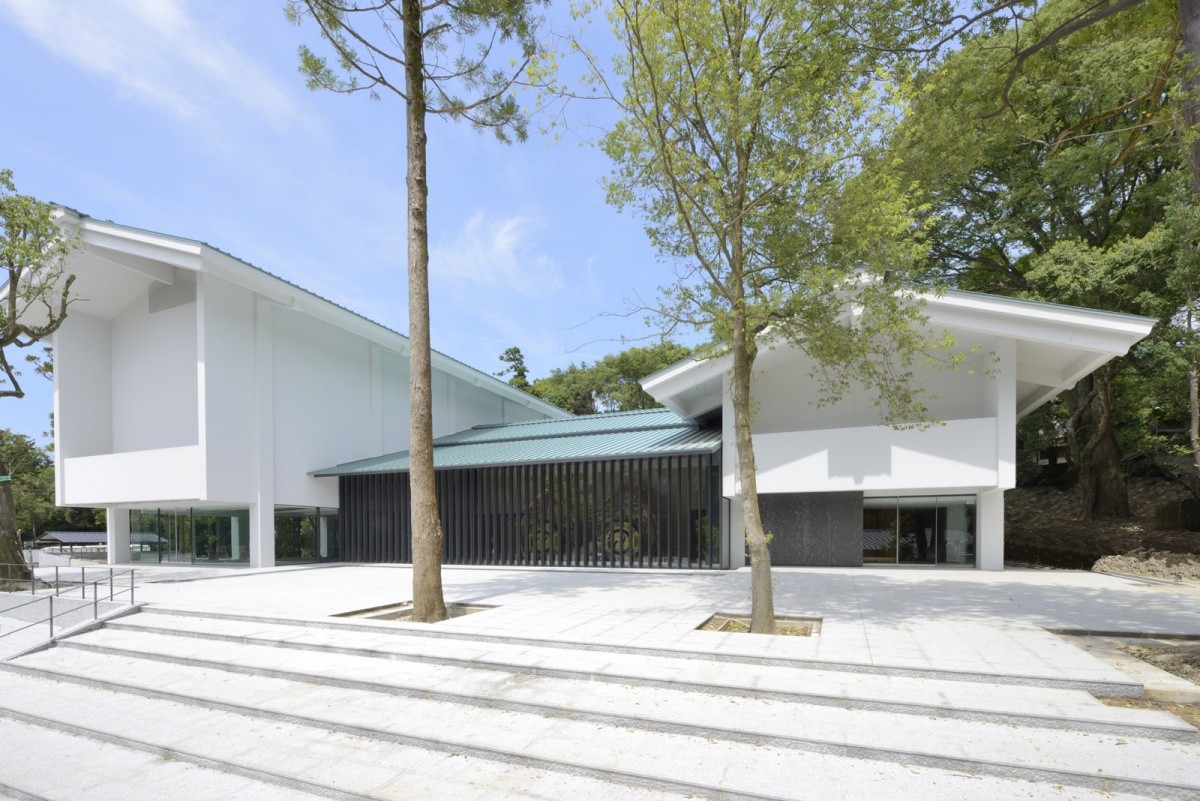
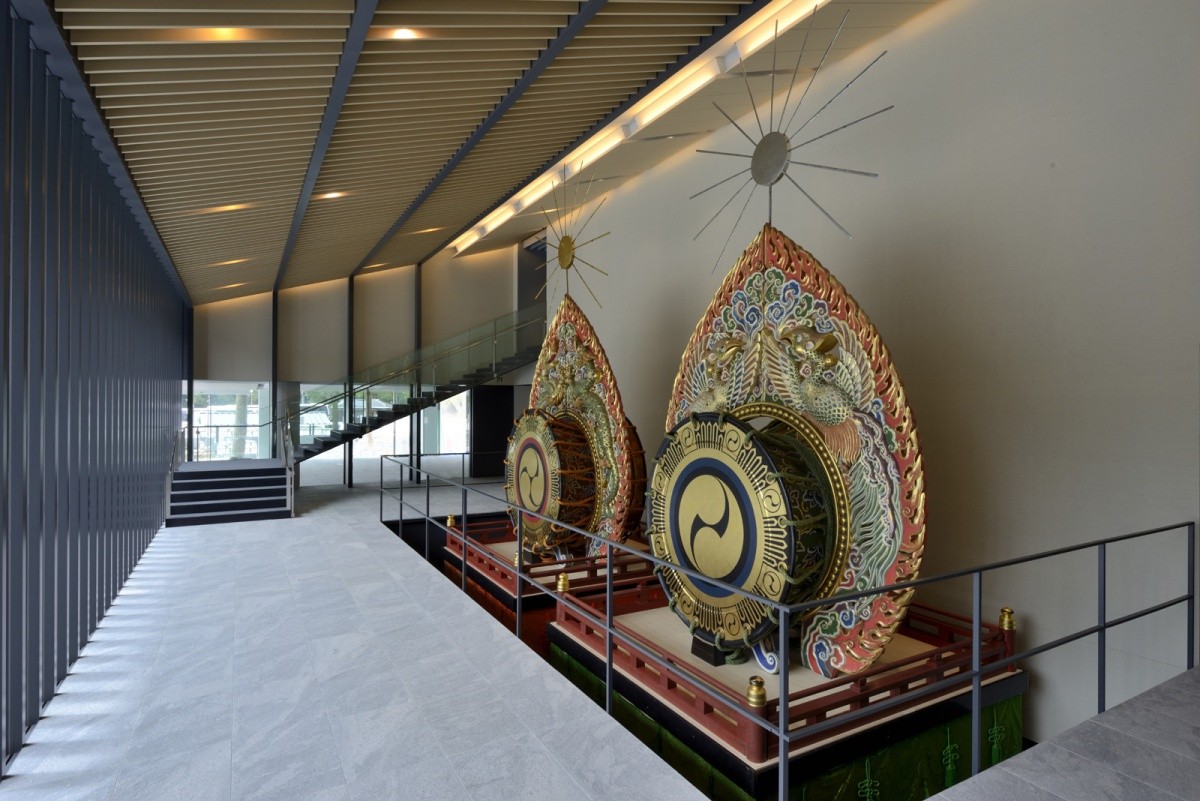
The first highlight is the Chumon Gate, directly in front of the Main Sanctuary building. About 10 meters tall, it is winged on each side by long, thin buildings called the Oro. Both the gate and the Oro are beautiful buildings, painted in the brilliant vermillion representative of Kasuga Taisha Shrine, and were completed in 1613.
The second highlight is the Kairo "corridor", or wall. Surrounding the Main Sanctuary and other buildings at the center of the grounds, the elegant building is painted vermillion and lined completely with bronze lanterns. If you make a special visit to the front of the Main Sanctuary (for a 500 yen fee), you can walk along the corridor and visit the Main Sanctuary through the Chumon Gate.
In addition, the National Treasure Hall within the precincts houses more than 3,000 treasures, including 352 national treasures and 971 important cultural properties, and they are shown several times a year in special themed displays. There are many treasures from the Heian Period, and two of the largest Dadaiko drums in Japan, at about 6.5 meters tall, that are used at the dance festival called the "Kasuga Wakamiya On Festival", are displayed in the Taiko Hall.
The Mantoro Rites
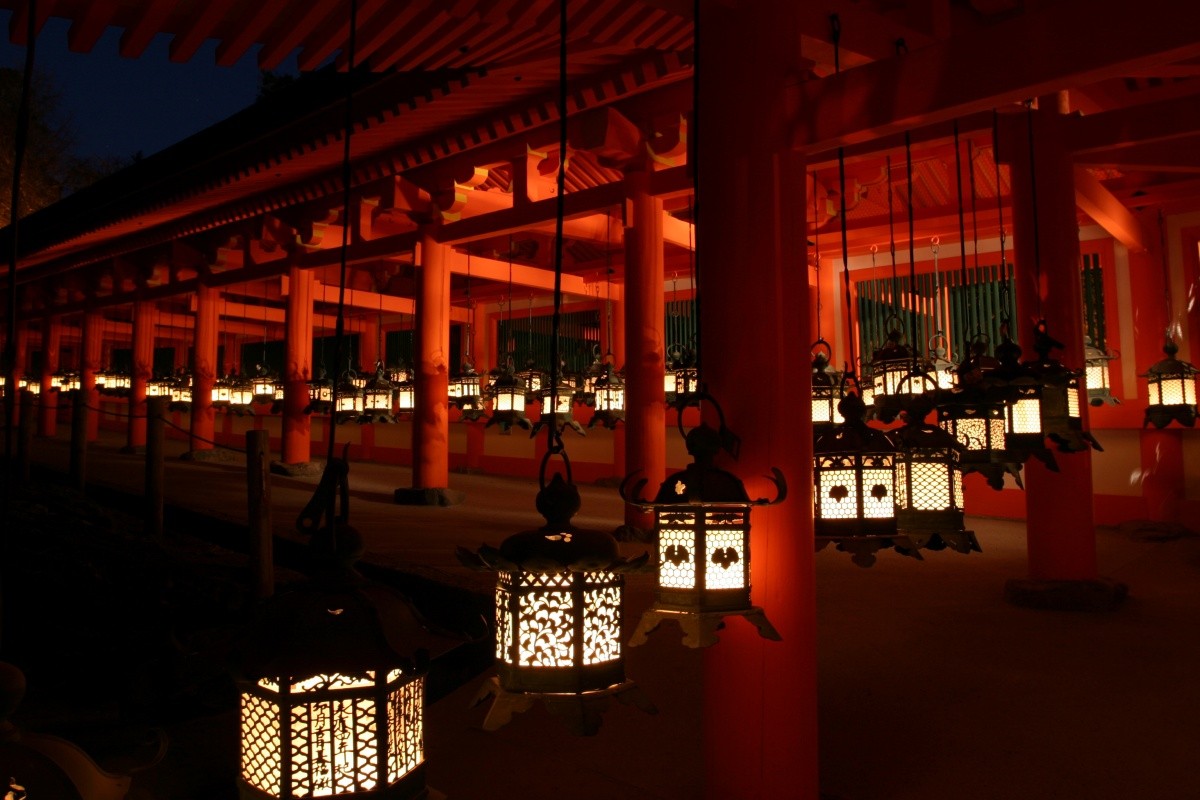
Every year during Setsubun and on August 14th-15th for Obon, there is a rite called "Mantoro". In an offering of prayers and purifying fire, all 3,000 lanterns in the grounds are lit from the evening, creating a solemn and fantastic atmosphere.
Access to Kasuga Taisha Shrine
From JR or Kintetsu Nara Station, take the Nara Bus headed to "Kasuga Taisha Honden-yuki" for about 12 minutes, and get off at the "Kasuga Taisha Honden" bus stop. Or it's about 10 minutes by the city loop line, and get off at the "Kasuga Taisha Omotesando" bus stop and walk about 10 minutes.
*Bus schedules and availability vary by season, so please check to be sure.
Spot Information
- Street Address: 160 Kasugano-cho, Nara-shi, Nara Prefecture 〒630-8212
- Access: As above
- Language: Official website available in English, Traditional Chinese, Simplified Chinese, Korean and French
- Ticket: Special admission to the front of the Main Sanctuary 500 yen, National Treasure Hall 500 yen, Man'yo Botanical Garden 500 yen
- Business Hours:
- March~October: 6:30-17:30
- November~February: 7:00-17:00
- Special admission:
- Main Sanctuary: 9:00-16:00
- National Treasure Hall: 10:00-17:00 (last entry 16:30)
- Man'yo Botanical Garden:
- March~November: 9:00-17:00 (last entry 16:30)
- December~February: 9:00-16:30 (last entry 16:00; Hours listed are a guideline, and are subject to change)
- Meoto Daikokusha: 9:00-16:30 (Hours listed are subject to change due to events or ceremonies)
- Holidays:
- Special admission to the front of the Main Sanctuary closed on March 8th - 13th, December 20th - January 7th
- Coming of Age Ceremony Day
- The 1st, 11th, and 21st of every month
- Setsubun, February 17th, March 14th and 15th, the Vernal Equinox, April 3rd, the 3rd Friday in May, May 5th and 10th, August 7th and 15th, the Autumnal Equinox, October 9th, November 3rd and 23rd, and the morning of December 17th
- *Other than those dates listed, there may be days when the sanctuary is closed due to special events.
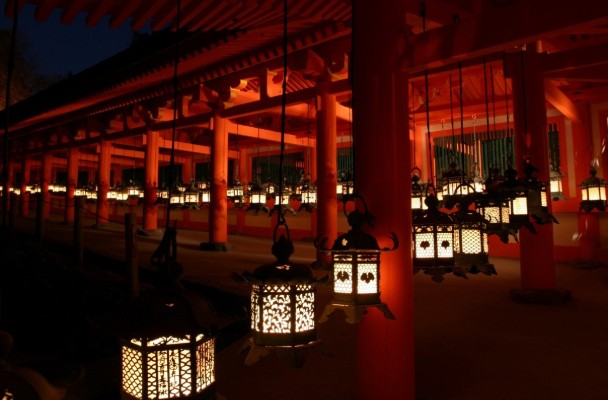
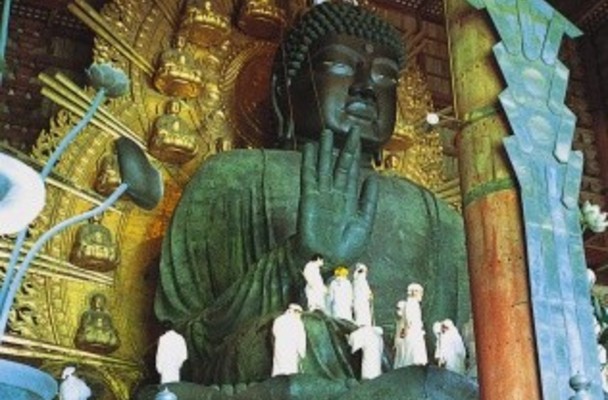
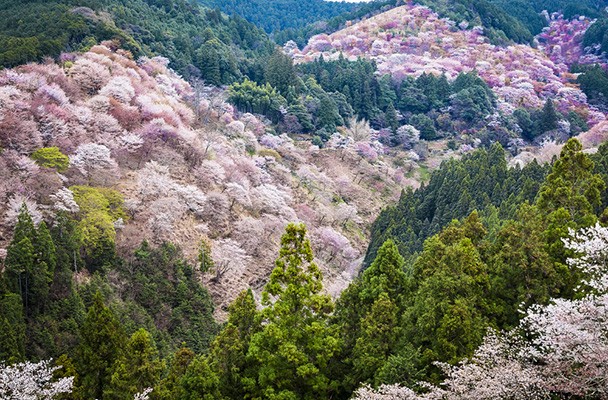
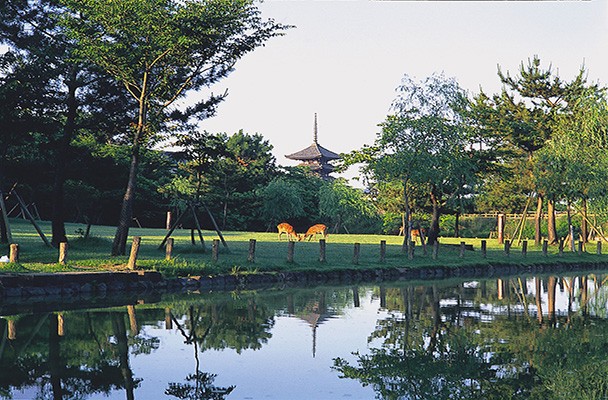
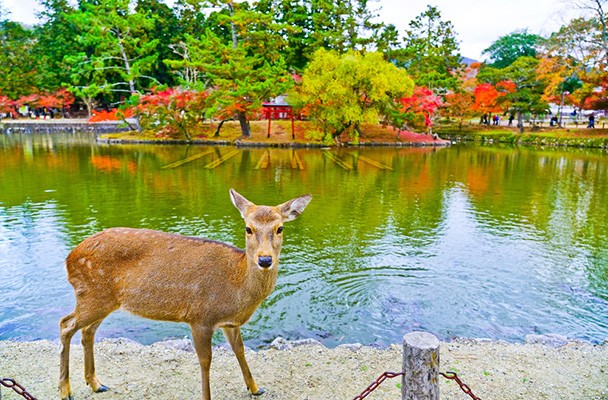
Comments